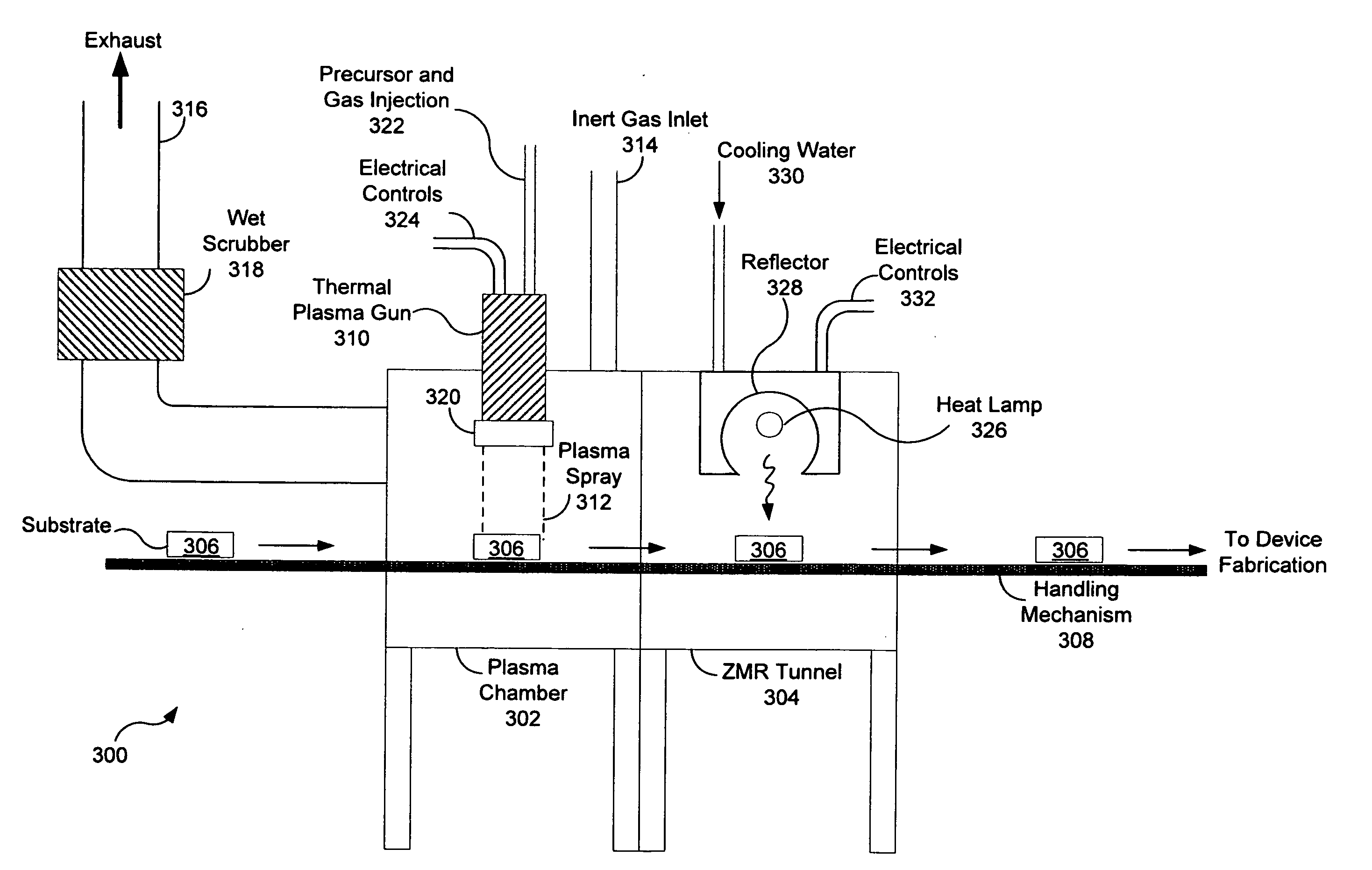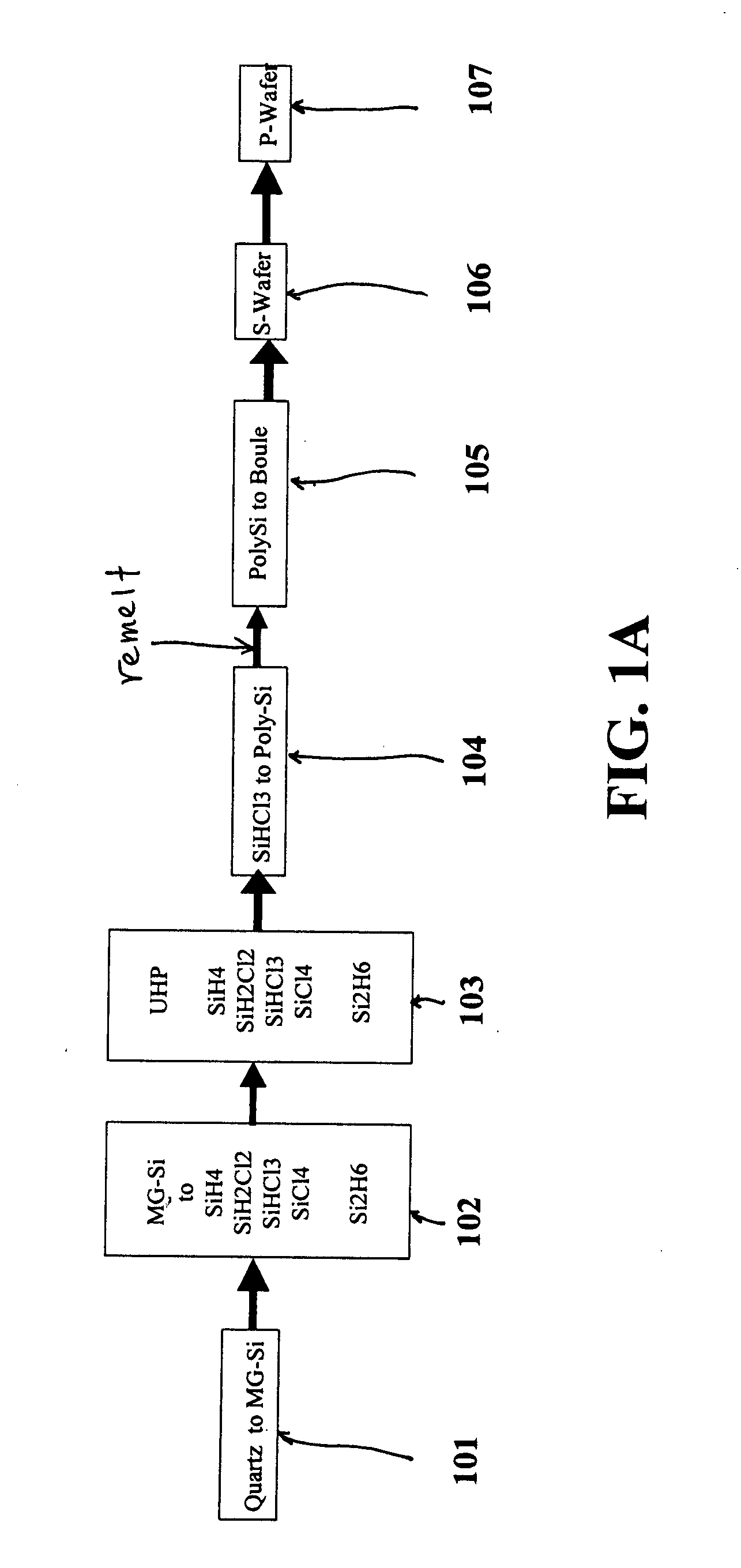Methods and systems for manufacturing polycrystalline silicon and silicon-germanium solar cells
a technology of polycrystalline silicon and solar cells, applied in the field of methods and systems for producing photovoltaic devices or solar cells, can solve the problems of significant cost increase, plateauing of the reduction of the cost per watt of silicon based solar cells, and exhausted potential of both options, so as to promote widespread acceptance and adoption, and reduce the cost
- Summary
- Abstract
- Description
- Claims
- Application Information
AI Technical Summary
Benefits of technology
Problems solved by technology
Method used
Image
Examples
Embodiment Construction
[0022]Embodiments of the present invention are now described in detail. In one embodiment, methods of forming a solar cell or photovoltaic device are provided generally comprising the steps of: generating a plasma stream in a thermal plasma source; injecting one or more silicon intermediate compounds in liquid and / or gaseous form into thermal plasma source wherein the silicon intermediate compounds dissociate; injecting hydrogen into the thermal plasma source; and depositing a polycrystalline silicon film on the surface of one or more substrates located proximate said thermal plasma source, wherein hydrogen is incorporated into the polycrystalline silicon film to promote passivation of silicon grains formed in the polycrystalline silicon film.
[0023]Of particular advantage, liquid and / or gaseous silicon intermediate compounds are employed. In one preferred embodiment, liquid silicon intermediate compounds having a purity of about 99.5% and greater are used. Examples of suitable silic...
PUM
| Property | Measurement | Unit |
|---|---|---|
| pressure | aaaaa | aaaaa |
| distance | aaaaa | aaaaa |
| distance | aaaaa | aaaaa |
Abstract
Description
Claims
Application Information
 Login to View More
Login to View More - R&D
- Intellectual Property
- Life Sciences
- Materials
- Tech Scout
- Unparalleled Data Quality
- Higher Quality Content
- 60% Fewer Hallucinations
Browse by: Latest US Patents, China's latest patents, Technical Efficacy Thesaurus, Application Domain, Technology Topic, Popular Technical Reports.
© 2025 PatSnap. All rights reserved.Legal|Privacy policy|Modern Slavery Act Transparency Statement|Sitemap|About US| Contact US: help@patsnap.com



